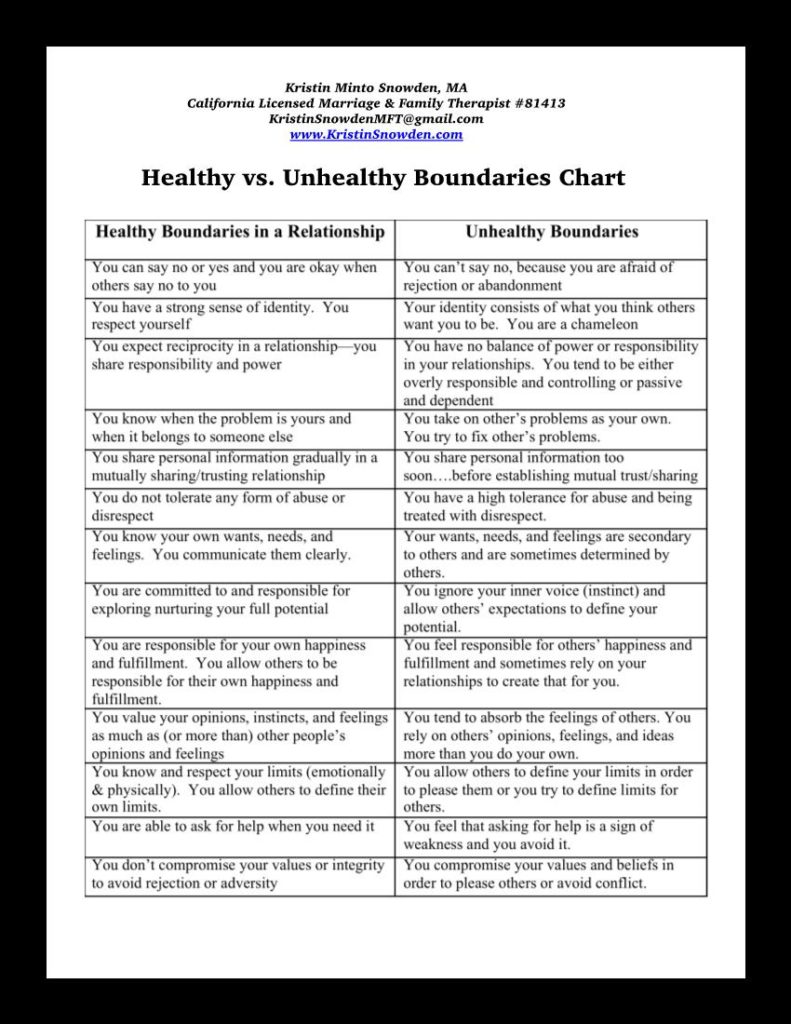By Kristin Snowden, MA, LMFT
In my previous post to this site (click here), I discussed the need for boundaries when developing healthy intimacy (or repairing broken intimacy). I discussed the fact that boundaries are an expression of self-love, that they help both you and others feel safe, that they can increase your sense of empathy, compassion, and love, and that can be incredibly helpful when healing from betrayal trauma. In this post, I discuss the process of setting healthy boundaries.
The goal of an intimate relationship is to feel safe enough in the relationship (and in who you are and what you have to offer another) to express your true, authentic self without an underlying fear of abandonment, rejection, or disconnection. Relationships should feel balanced, and they should enhance and enrich one’s life. Healthy boundaries allow a person to experience comfortable interdependence with other people, resulting in well-functioning exchanges with others and positive self-regard.
When beginning the path of identifying and establishing boundaries with a client, I love citing Brené Brown’s short and simple slogan: Choose discomfort over resentment. I will do so here as well. Choose discomfort over resentment. In other words, choose the discomfort of asserting your own wants and needs in a relationship in lieu of ignoring your boundaries. If you don’t assert healthy boundaries, the end result will most often be resentment. The outcome of doing things only for the sake of making others happy (or not upset, or not disappointed, etc.) is nearly always resentment and passive aggression. Those are not traits that will contribute to your self-worth and love.
The next thing I do when working with clients who are struggling with boundaries, is ask them to review the chart below, and to explore how they respond to various “relationship challenges” with their partners, co-workers, friends, family, etc. I suggest that if you are struggling to establish and maintain healthy boundaries, you do the same.
The Boundaries Chart helps you identify your own habits and behaviors when engaging with others. Reviewing the chart regularly might help you see where your strengths and weaknesses lie, and which relationships may challenge your ability to institute boundaries and limits. This chart is a great roadmap and guide for how to interact with anyone and everyone.

After you’ve spent some time with this chart, identifying your strengths and weaknesses, you can identify areas where you need better boundaries – either tighter or looser. Over time, you can implement those boundaries. In so doing, you will almost certainly find that your connections with others, especially your intimate connections, grow stronger and more enjoyable.
***
Kristin Minto Snowden, MA, LMFT specializes in helping individuals couples recover and heal from addiction, depression, anxiety, trauma, loss, infidelity, and other relationship challenges. She is an adjunct therapist and educator and Avalon Malibu, a treatment center for substance abuse and mental health disorders. Previously, she helped to develop and run the Substance Abuse and Intimacy Disorder Program at Promises Malibu – a comprehensive multi-focused addiction treatment program that was the first of its kind in the world.
